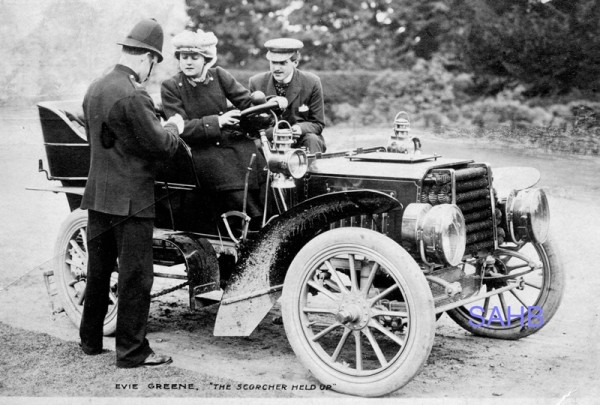
Some years ago this picture postcard was used in a quiz where the car’s make had to be identified. Answers included Panhard-Levassor, Napier, Gladiator, and MMC. In fact the Brooke motor cars of this period had one exclusive and identifying visual feature: the ‘bowl’ in the centre of the steering wheel in which items like driving gloves could be placed. The variety of answers serves as a reminder that the cliché: ‘all cars look the same today’ is a timeless phrase, although despite this particular example, it was actually as incorrect then as it is now.
J W Brooke & Co was an engineering firm in Lowestoft on the Suffolk coast that had been in business since the 1860s, and their steam marine engines had a ready local market. Motor car production began at the start of 1902 and from the outset the head of the firm, Mawdsley Brooke, showed that he was capable of imaginative thinking. The car’s engine, most unusually at this early date, was a monobloc 3-cylinder with all valves mechanically operated. The first cars had this unit fitted transversely, but this was soon altered to in-line mounting.
In addition, there was no gear box as such. The change-speed transmission box contained a series of Renold silent chains running over paired sprockets, the free-running ones on the output shaft being individually ‘fixed’ when the gear-change was operated. Worby Beaumont, in the 1906 edition of his book Motor Vehicles and Motors, states that “the mechanical efficiency of the transmission is high”. Others echoed this opinion and also commented on its silence.
As well as running the firm and being a motorist from 1899, Mawdsley Brooke was also an enthusiast for boating in all its forms, and marine vessels with petrol engines became a significant adjunct to the business. In 1903 Brooke produced one of the first six-cylinder engines by mounting a pair of engine blocks in line on a single crankcase, and this unit was fitted to a 34-foot motor launch. Six-cylinder Brooke cars did not though appear until mid-1906.
As for the lady in the photo, Evie Greene was a singer and actress, so this was obviously a staged incident. The caption to a different picture of the same car in The Autocar reads: “… it has been driven over three thousand miles without the least trouble of any sort”. So this postcard does rather make the point that when conducting a motor car one never knows what might be awaiting round the next corner!







One wonders how the policeman managed to chase and then stop Ms Greene.